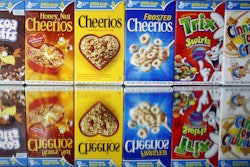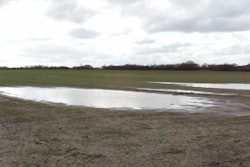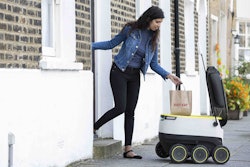
Forget the weather channel; the biggest indicator of a storm is empty shelves at the supermarket. When bad weather strikes, people rush to the nearest grocery store to stock up on bread and water. While inclement weather can mean high single-day sales for grocers and convenience stores, this mad dash can result in limited supplies for customers, forcing them to hop from store-to-store to get all of their necessities before a blizzard or hurricane.
By not properly preparing for the big rush, grocers are missing out on a massive opportunity to not only grow profits, but also build loyal customers in the process. Specifically, by connecting both internal and external data into a single source, grocers can better anticipate customer needs and optimize stocking and staffing strategies accordingly ahead of the next big storm. To show local customers they can depend on a grocery store, here are three ways to bolster bad weather operations strategy.
Identify upcoming weather patterns, and understand customer purchasing behaviors.
You don’t need to be a meteorologist to predict the next big storm. Today’s advanced analytics and performance management systems allow businesses to incorporate accredited, third-party data, like that of the National Oceanic and Atmospheric Administration (NOAA), to understand weather factors that could potentially affect customer buying patterns, such as temperature, wind, precipitation and visibility. Incorporating this information into a grocer’s performance accounting and preparation strategies will allow improved anticipation of customer purchasing habits, and put the most effective processes in place to capitalize on customer needs.
Specifically, by connecting weather data and historical sales insight, grocers can pull valuable information on particular shopper behaviors during previous storms. For example, grocers can determine which specific product types and SKUs went out-of-stock during the last big hurricane. If people tended to stock up on bread and bottled water, grocers can ensure there is an abundance of these items in the backroom before the next hurricane hits.
Improve order placement and stocking strategies to meet customer needs.
Once grocers have an idea of customer shopping habits, the next step is aligning with their supply chain partners. Weather problems can throw a wrench into shipping timelines and even product availability. To ensure grocers are on the same page with their suppliers and distributors, they should once again look to their data.
Developing a smart strategy for bad weather is a complex process. It’s not only crucial to have an understanding of what customers want, but it’s also important to know how partners tend to operate during storms. There are masses of data that exist throughout the supply chain that shed light on these behaviors. By looking to this information related to shipping and delivery, as well as product availability, grocers can gain a better understanding of the constraints their partners are under during bad weather and ensure they are working as efficiently as possible to place orders and receive products on time.
Optimize staffing to keep the store stocked and customers happy.
As previously mentioned, bad weather means influxes of customers. To meet their needs, it’s not only about having enough of the right products—grocers also need to ensure they have enough staff on hand to restock and checkout customers. By once again turning to their data, grocers can understand how many bodies are needed on the floor at any given time to keep operations flowing at an efficient rate. This means ensuring lines are moving quickly, people are on hand to help customers find necessary items and employees are stocking areas of the store that need it the most.
Bad weather can feel like the apocalypse, especially when it comes to serving customers and keeping shelves stocked. By looking to their data, grocers can stay ahead of big storms by understanding customer shopping habits, efficiently working with partners and optimizing employee scheduling. Ultimately, these data-driven strategies will allow grocery stores to turn bad weather chaos into happy shopping and loyal customers.



















